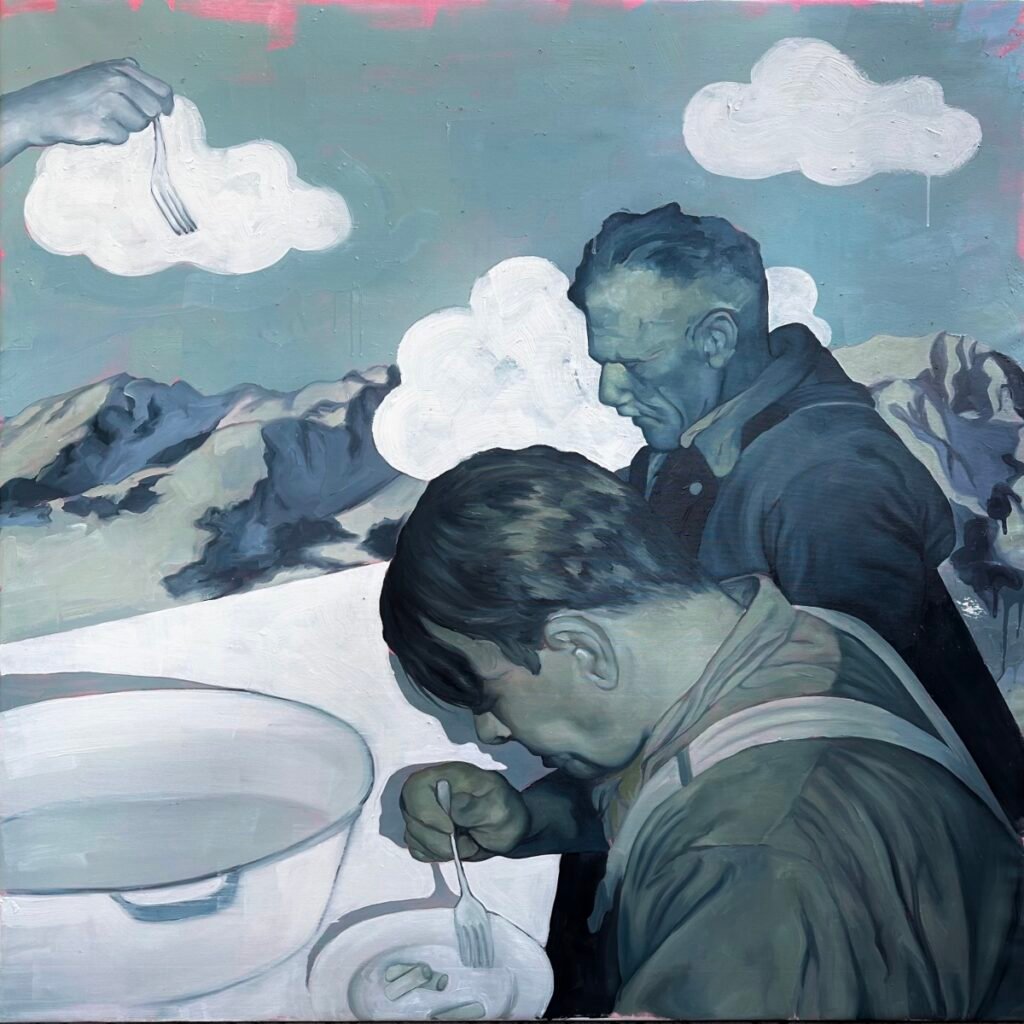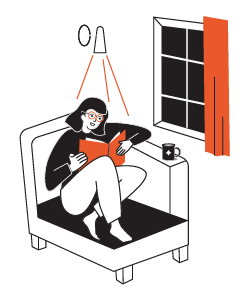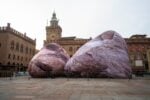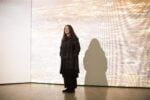Francesca Mazzagatti #2

Mostra personale.
Comunicato stampa
Francesca Mazzagatti, Pastasciutta antifascista, olio su tela, 120x120 cm, 2024
Il dipinto colpisce per la sua capacità di fondere un linguaggio pittorico tradizionale che rimane sospeso
tra il documento e il sogno, un realismo sfocato che diventa memoria surreale e straniante. Le due figure,
chine e raccolte, sembrano immerse in un gesto quotidiano - il mangiare - ma il contesto li trasporta
altrove, rappresentando la dignità della fame e della condivisione, la forza civile che nasce dall’umiltà del
quotidiano.
La mano che dall’alto porge la forchetta, in questo contesto, può essere letta come simbolo di un aiuto
fraterno, ma anche come richiamo iconico e struggente alla grazia e alla speranza in tempi tragici.
Dominata da toni freddi e polverosi, la pittura evoca una memoria fotografica sbiadita, quasi un’immagine
d’archivio riemersa dal tempo. La montagna sullo sfondo, insieme alle nuvole-pennacchi, rafforza il senso
di un’Italia ferita ma capace di sollevarsi, e gli accenti rosati sul bordo superiore suggeriscono un
equilibrio tra malinconia e luce.
Non c’è retorica, bensì una compassione distillata: la pittura come atto di memoria, ma anche come gesto
di resistenza poetica, una riflessione sul nutrimento materiale e ideale, un rituale apparentemente
comune, una parabola sul bisogno e sulla dipendenza.
L’opera è un omaggio alla famiglia Cervi che il 25 luglio del 1943, in occasione dell’arresto di Benito
Mussolini, festeggiò cucinando 380kg di pasta al burro e parmigiano (pastasciutta) per tutto il loro paese,
Compegine (RE). I sette fratelli Cervi vennero fucilati dai fascisti alla fine dello stesso anno, mentre il padre
Alcide venne arrestato e solo due anni dopo, all'uscita dal carcere, venne a sapere della tragica morte dei
suoi figli. Egli divenne un portavoce della resistenza partiginana fino alla sua morte nel 1970.
The painting is striking for its ability to blend a traditional pictorial language that remains suspended
between document and dream, a blurred realism that becomes a surreal and alienating memory. The two
figures, bent over and gathered together, seem immersed in an everyday gesture - eating - but the
context transports them elsewhere, representing the dignity of hunger and sharing, the civil strength that
arises from the humility of everyday life.
The hand holding out the fork from above, in this context, can be interpreted as a symbol of brotherly
help, but also as an iconic and poignant reminder of grace and hope in tragic times.
Dominated by cold, dusty tones, the painting evokes a faded photographic memory, almost like an
archive image that has re-emerged from time. The mountain in the background, together with the plume-
like clouds, reinforces the sense of an Italy that is wounded but capable of rising again, and the pink
accents on the upper edge suggest a balance between melancholy and light.
There is no rhetoric, but rather distilled compassion: painting as an act of memory, but also as a gesture
of poetic resistance, a reflection on material and ideal nourishment, an apparently common ritual, a
parable on need and dependence.
The work is a tribute to the Cervi family who, on 25 July 1943, on the occasion of Benito Mussolini's
arrest, celebrated by cooking 380 kg of pasta with butter and Parmesan cheese (pastasciutta) for their
entire village, Compegine (RE). The seven Cervi brothers were shot by the Fascists at the end of that
same year, while their father Alcide was arrested. Only two years later, upon his release from prison, did
he learn of his sons' tragic death. He became a spokesperson for the partisan resistance until his death in
1970.



